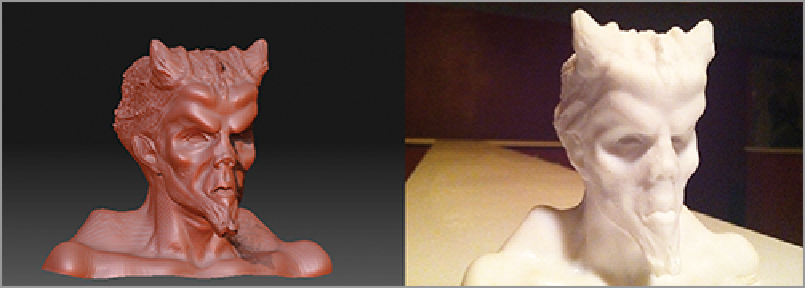Graphics Programs Reference
In-Depth Information
Image courtesy of Z Corporation
Figure 11-5:
This demon bust was printed by artist Nick Benson on a ZCorp 510 3-D printer.
3-D Milling
3-D mills or
CNC milling machines
are generally used for larger objects than are possible to print on a 3-D
printer. They are somewhat faster and yet reproduce less detail by virtue of the material employed and the
fact that a carving approach is used rather than an additive building process. The mill can operate in multiple
axes, allowing a movable robotic head to carve away the shape of 3-D data in a block of material (
Figure
11-6
)
. 3-D milling is generally used for large-scale objects and the detail is generally limited by the side
of the milling head and the quality of base material being milled. We do not focus much on milling in this
chapter because you will almost always be printing with a stereolithography machine or a 3-D printer to get
the level of detail you will want in your figures.
One drawback to 3-D milling is its inability to reproduce undercuts. Undercuts are areas of a shape that
dip back and underneath, like the nostrils or insides of ears (
Figure 11-7
)
. Because a mill carves the shapes
out, you cannot mill an undercut as easily as you can print an object with an undercut.
Figure 11-8
shows
a life-sized King Kong milled by Gentle Giant for the premiere of King Kong in New York City. The data
used was the actual Kong model, reworked and detailed in ZBrush. This amazing project was overseen by
Gino Acevedo of Weta Workshop for Gentle Giant Studios.
Figure 11-6:
A Comet robot milling machine

Search WWH ::

Custom Search